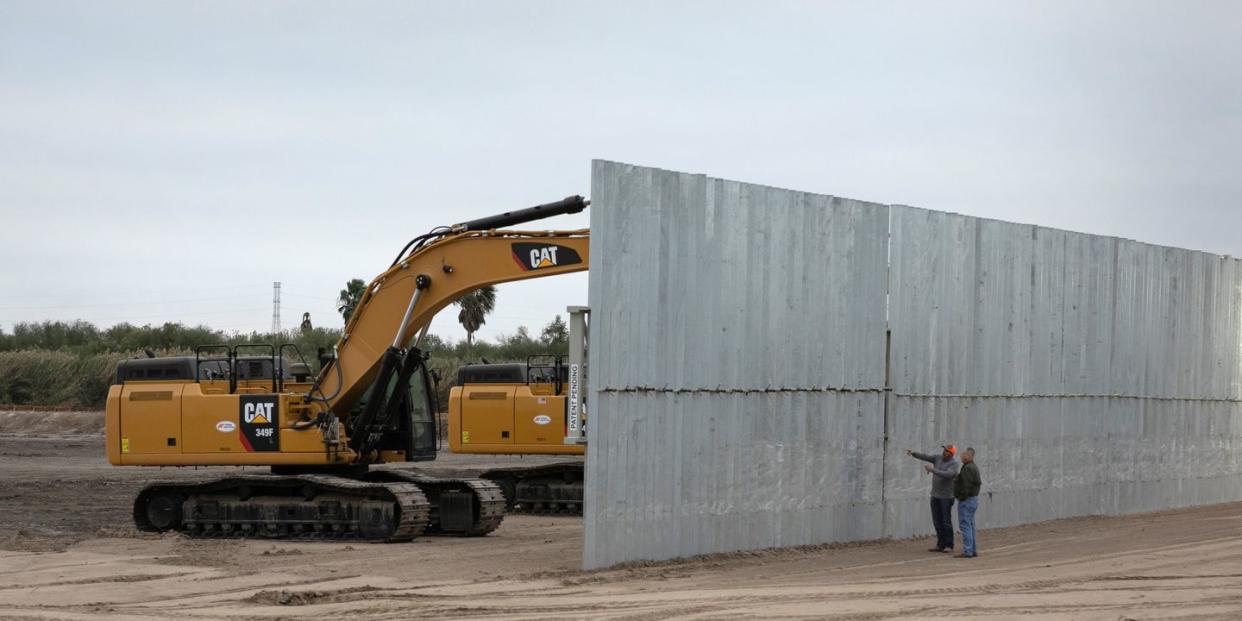The Privately Built Border Wall Will Fail, Engineering Report Shows

A trial section of the privately built "border wall" is experiencing erosion, especially after Hurricane Hanna in July.
The steel bollard construction is the winning candidate from eight wall designs.
Much of the erosion is from removing vegetation at the building site.
ProPublica reports that a short section of the privately funded and constructed “border wall” along the shores of the Rio Grande River, which forms the U.S. border with Mexico, is not built for the long haul, according to two engineering studies that will enter into federal court this week.
While the “We Build the Wall” organization has been in the news for financial issues and lawsuits, let’s look purely at the wall itself. What does it take to build a large wall that will stand the test of time?
DIVE DEEPER ➡ Read best-in-class military, tech, and engineering features, and get unlimited access to Pop Mech , starting now.
The wall building began with a vetting process, where eight prototypes were built and tested before We Build the Wall ultimately decided which wall would work best. But that's where the problems began, as John Oliver recently reported on Last Week Tonight: “A government report found every mock-up was ‘deemed vulnerable to at least one breaching technique,’ with one having the ‘potential to impact the structural integrity of the entire mock-up,’” Oliver said.
Once We Build the Wall chose the winning design, a company called Fisher Sand and Gravel installed a short section of steel bollard fence as proof of concept in Texas. The Border Patrol explains:
“A steel-bollard style wall provides significant impedance and denial capability. These are hollow steel beams that are filled with concrete and rebar. The space between the bollards satisfies a visibility requirement. ‘It’s important for our agents to see any adversary to the south,’ said [Border Patrol sector chief Brian] Martin.”
The bollard, a common structural type of fencing, is already in use around the world. In Melbourne, bollards slide in and out of place to shelter a pedestrian event from traffic. In Berlin, they protect bicycle lanes, again from traffic. If you’ve navigated a sidewalk or bike path with upright steel beams that prevent cars from entering, those are likely bollards as well.
So what has happened that has eroded the trial fence so quickly? ProPublica reported on the extensive erosion and its causes earlier this year. In Texas, the border is the Rio Grande, and building a stable wall close to a waterway requires some extra considerations. In this case, ProPublica explains, Fisher Sand and Gravel stripped vegetation that typically helps to hold even waterlogged sod together, leaving just soil that can be washed away.
Since its original reporting, ProPublica says, the same areas that were already vulnerable in the wall were pummeled by wind and torrential downpours from Hurricane Hanna in July:
“‘The damage to the soil underneath the fence after Hanna is far worse than what we saw from the photos from the big rain events from a month or so ago,’ said Alex Mayer, a civil engineering professor at the University of Texas at El Paso who has done research in the Rio Grande basin.”
A steel and concrete wall is heavy and structurally sound, but in this case, it’s built on a foundation stripped to sand. Fisher Sand and Gravel says revegetating the area will help to shore up the wall and that this is, indeed, a “normal” part of the construction process.
You Might Also Like

